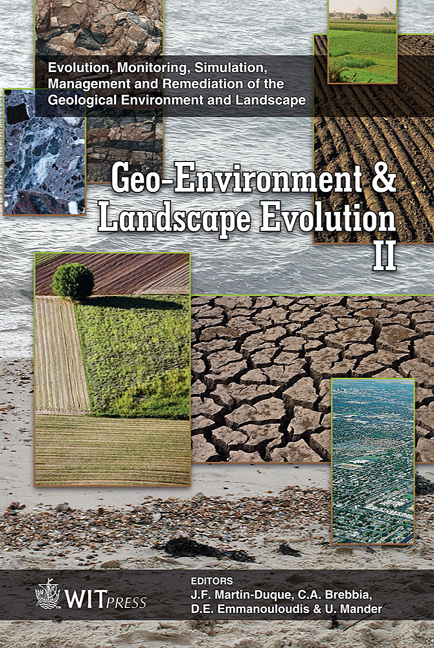Dynamics Of Suspended Sediment Concentration And The Impact On A Lake-inhabiting Bivalve (Corbicula Japonica) In The Abashiri River Basin, Hokkaido, Northern Japan
Price
Free (open access)
Transaction
Volume
89
Pages
10
Published
2006
Size
1,054 kb
Paper DOI
10.2495/GEO060241
Copyright
WIT Press
Author(s)
S. Yanai, Y. Nishihama & R. Tamura
Abstract
The dynamics of suspended sediment and the impact on a lake-inhabiting bivalve were studied in the Abashiri River basin, in eastern Hokkaido, northern Japan. The Japanese bivalve: Corbicula japonica is the most important fishery resource in Abashiri Lake. Torrential rain over 80 mm per day resulted in considerable sediment concentration during the summer of 2003. Suspended sediment (SS) concentrations >1600 mg/l were measured in the tributaries, where fragile rock formations and faults had developed. The factors influencing SS concentration were analyzed by multiple regression analysis. This led to the identification of soft bedrock and fault densities as significant factors influencing sediment concentration. Fine-sediment particles less than 0.063 mm in diameter accounted for more than 80% of the samples at all stations. Since the lake bivalve prefers coarse substrates, a negative relationship was observed between the percent of fine sediment and the C. japonica distribution and fatness. The substrate around the mouth of the river was also composed of fine sediment, which indicated that the suspended sediment produced from the mountain tributaries has deteriorated the lake environment, especially for C. japonica survival and growth. Keywords: suspended sediment, Abashiri River, substrate, Corbicula japonica and watershed management.
Keywords
suspended sediment, Abashiri River, substrate, Corbicula japonica and watershed management.





